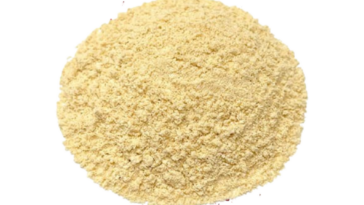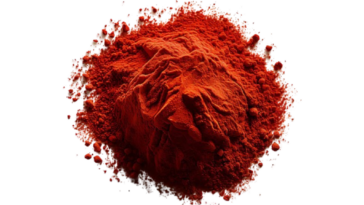Maltodextrin, a common food additive, has its origins in the starch of various plants, primarily corn, wheat, and potatoes. The process of creating maltodextrin involves hydrolyzing these starches into shorter chains of glucose molecules through enzymatic or acidic hydrolysis. This results in a white, relatively tasteless powder composed of glucose polymers of varying lengths. The degree of hydrolysis determines the length of these chains and thus influences the properties of maltodextrin, such as its solubility, viscosity, and sweetness.
Initially developed as a thickening agent and filler in processed foods, maltodextrin found its way into a wide array of products due to its versatility. Its ability to enhance texture, stabilize flavors, and improve mouthfeel makes it a popular ingredient in products ranging from sports drinks and infant formulas to desserts and snacks. Moreover, its relatively low cost and ease of production contribute to its widespread use in the food industry. Despite its utility, maltodextrin’s high glycemic index and rapid digestion can impact blood sugar levels, prompting some to be cautious about its consumption, especially for individuals with diabetes or those monitoring their carbohydrate intake.
Vitamins & Minerals:
Maltodextrin, a common food additive derived from starch, doesn’t naturally contain significant amounts of vitamins or minerals. It’s primarily used as a carbohydrate source in various processed foods, beverages, and supplements due to its easy digestibility and bland taste. However, if maltodextrin is fortified or enriched with additional nutrients, it may contain some vitamins and minerals.
Vitamins are essential organic compounds required in small amounts for various physiological functions. They play crucial roles in metabolism, immune function, and overall health. Common vitamins found in fortified maltodextrin might include vitamin C, which is vital for immune function and collagen synthesis, and the B vitamins (such as thiamine, riboflavin, niacin, vitamin B6, and vitamin B12), which are important for energy metabolism, nerve function, and red blood cell production. These vitamins are often added to maltodextrin to enhance its nutritional value, particularly in sports drinks or energy bars.
Minerals, on the other hand, are inorganic substances essential for maintaining fluid balance, bone health, nerve function, and muscle contraction. Common minerals found in fortified maltodextrin may include calcium, necessary for bone strength and muscle function, and potassium, crucial for nerve transmission and muscle contraction. Other minerals like magnesium, iron, and zinc might also be added to maltodextrin formulations to address specific nutrient deficiencies or to enhance overall nutritional content. However, it’s important to note that the specific vitamins and minerals present in maltodextrin would depend on the fortification process and the intended use of the product.
Probiotic, Prebiotic, or Postbiotic:
Maltodextrin is a carbohydrate derived from starch, typically corn, rice, potato, or wheat. While it is not inherently a probiotic, prebiotic, or postbiotic itself, it can indirectly affect the gut microbiota and potentially support probiotic activity.
- Prebiotic: Maltodextrin can act as a prebiotic, serving as a substrate for beneficial bacteria in the gut. Prebiotics are non-digestible food ingredients that promote the growth and activity of beneficial microorganisms in the gut. Maltodextrin can be fermented by certain probiotic bacteria, such as lactobacilli and bifidobacteria, leading to the production of short-chain fatty acids (SCFAs) which provide energy for colon cells and support gut health.
- Probiotic: Maltodextrin itself is not a probiotic, but it can be used as a carrier for probiotic bacteria. Probiotics are live microorganisms that, when administered in adequate amounts, confer health benefits to the host. Maltodextrin can be used as an inert carrier for probiotic supplements or added to probiotic-rich foods to improve stability and viability of the probiotic bacteria during processing and storage.
- Postbiotic: Postbiotics are metabolic byproducts of probiotic bacteria that confer health benefits to the host. While maltodextrin is not a postbiotic itself, it can indirectly support the production of postbiotics by providing a substrate for probiotic fermentation. The fermentation of maltodextrin by probiotic bacteria can result in the production of various postbiotic compounds such as SCFAs, peptides, and vitamins, which can exert beneficial effects on gut health and overall well-being.
In summary, while maltodextrin is not directly a probiotic, prebiotic, or postbiotic, it can play a role in supporting gut health indirectly by serving as a substrate for beneficial bacteria, as a carrier for probiotic supplements, and by facilitating the production of postbiotic metabolites through probiotic fermentation.
Dietary & Health Information:
Maltodextrin is a carbohydrate derived from starch, often corn, rice, wheat, or potato. It’s commonly used as a food additive to improve texture, flavor, and shelf life in a wide variety of processed foods and beverages. While it’s generally considered safe for consumption, there are some considerations regarding its dietary and health implications:
- Caloric Content: Maltodextrin is a carbohydrate and provides about 4 calories per gram, similar to other carbohydrates like sugar and starch.
- Glycemic Index: Maltodextrin has a high glycemic index, meaning it can cause a rapid increase in blood sugar levels after consumption. This can be a concern for individuals with diabetes or those trying to manage their blood sugar levels.
- Digestibility: Maltodextrin is easily digestible, which means it can provide a quick source of energy. However, for some people, consuming large amounts of maltodextrin may lead to gastrointestinal discomfort such as bloating or gas.
- Moderation: While there isn’t a specific recommended maximum daily intake for maltodextrin, it’s generally advised to consume it in moderation, especially considering its potential impact on blood sugar levels. Most dietary guidelines recommend limiting intake of added sugars and refined carbohydrates, of which maltodextrin is a part.
- Dietary Considerations: Individuals following low-carb or ketogenic diets may choose to limit or avoid maltodextrin due to its carbohydrate content. However, it’s important to note that maltodextrin is often found in processed foods where it may not be immediately apparent on the ingredient list.
- Health Risks: Consuming excessive amounts of maltodextrin, as with any carbohydrate, can contribute to weight gain if not balanced with physical activity and overall calorie intake. Additionally, for individuals with certain medical conditions like celiac disease or gluten sensitivity, maltodextrin sourced from wheat may pose a risk if not labeled as gluten-free.
In summary, while maltodextrin is generally recognized as safe for consumption, it’s important to be mindful of its presence in processed foods and to consume it in moderation as part of a balanced diet. If you have specific dietary concerns or health conditions, it’s advisable to consult with a healthcare professional or registered dietitian for personalized guidance.




 No products in the cart.
No products in the cart.